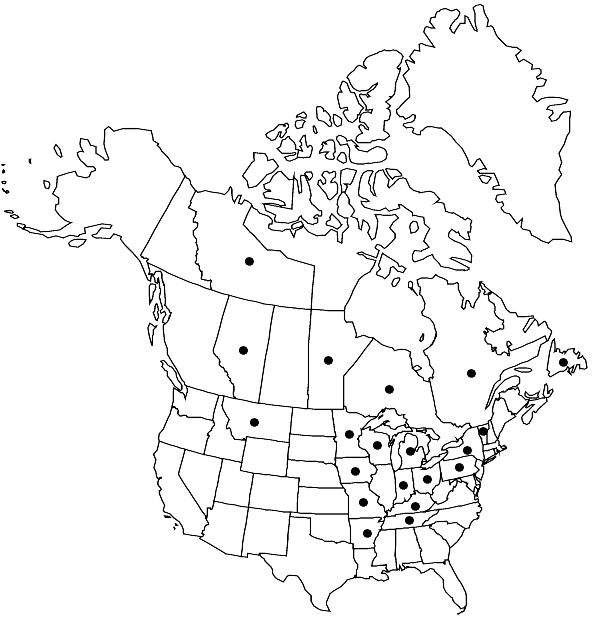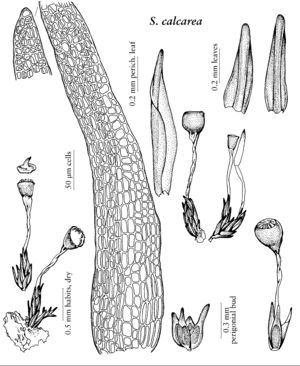Seligeria calcarea
Bryol. Europ. 2: 10. 110. 1846,.
Plants tiny, olive green. Leaves linear-lanceolate to ovate-lanceolate, stoutly subulate from oblong-ovate base, narrowly obtuse; costae ending in apex, filling subula; margins entire; leaf cells (1–)2:1; perichaetial leaves somewhat larger but similar to vegetative leaves, not much differentiated. Seta 1–1.5 mm, straight. Capsule ovate to hemispheric, as wide as long, widest at mouth only when old; peristome of 16 well-developed teeth; columella immersed. Spores 14–16 µm.
Habitat: Calcareous substrates
Distribution

Alta., Man., Nfld. and Labr. (Nfld.), N.W.T., Ont., Que., Ark., Ind., Iowa, Ky., Mich., Minn., Mo., Mont., N.Y., Ohio, Pa., Tenn., Vt., Wis., Europe.
Discussion
Seligeria calcarea is relatively common in eastern North America from Newfoundland south to Arkansas, and known from a few stations in western Canada and Montana. While its long, stoutly subulate leaves are quite similar to those of S. donniana, the leaf margins of S. calcarea are entire and those of S. donniana are denticulate. The sporophytes of S. calcarea are generally distinctive: the capsules gradually contract to the seta though a shriveled neck, a well-developed peristome is present, and the length of the capsule equals or slightly exceeds the width. Seligeria calcarea is distinguished from S. pusilla in having a subula filled by an expanded costa, whereas the latter has a slender costa ending in the apex.
Selected References
None.
